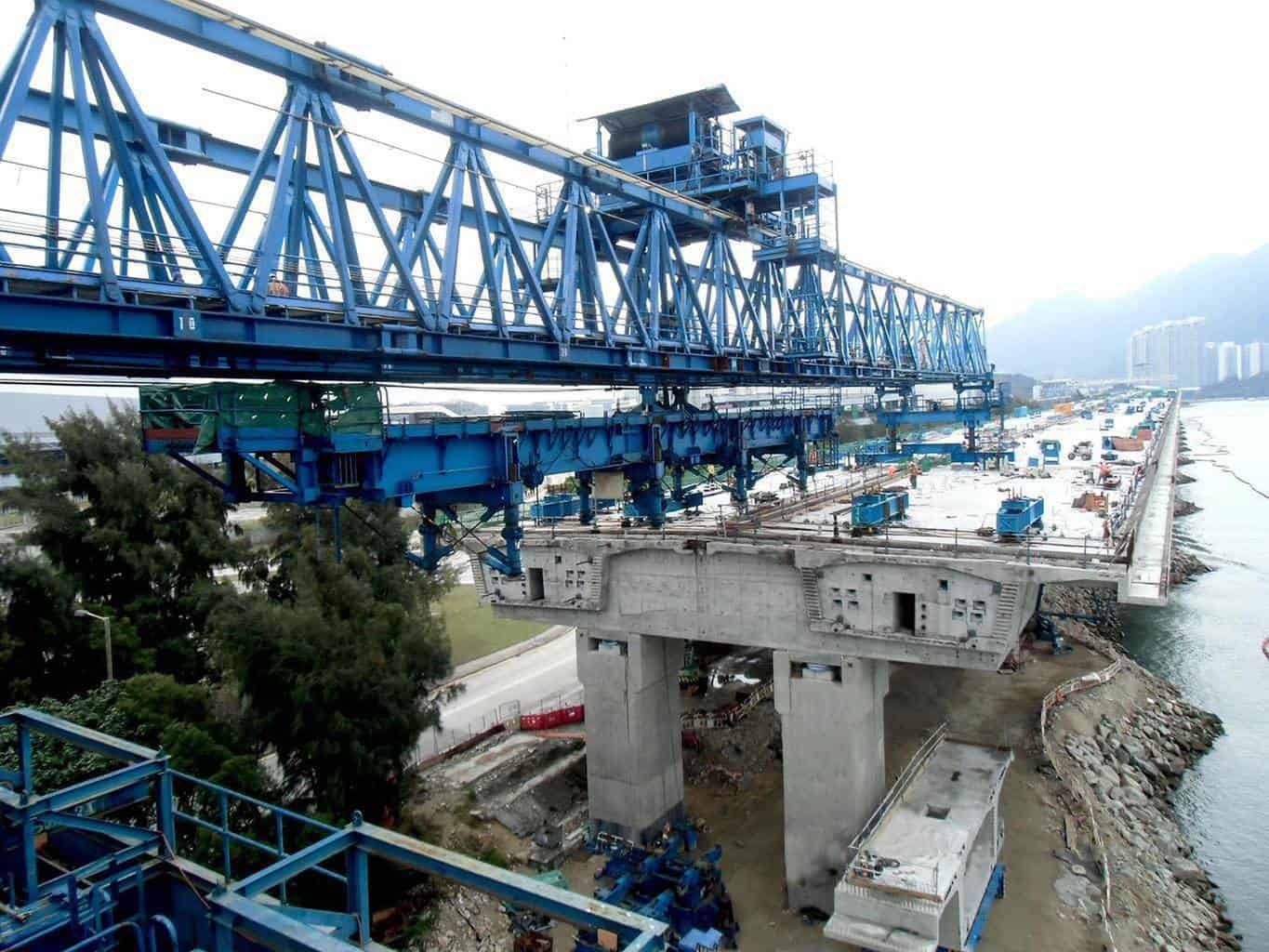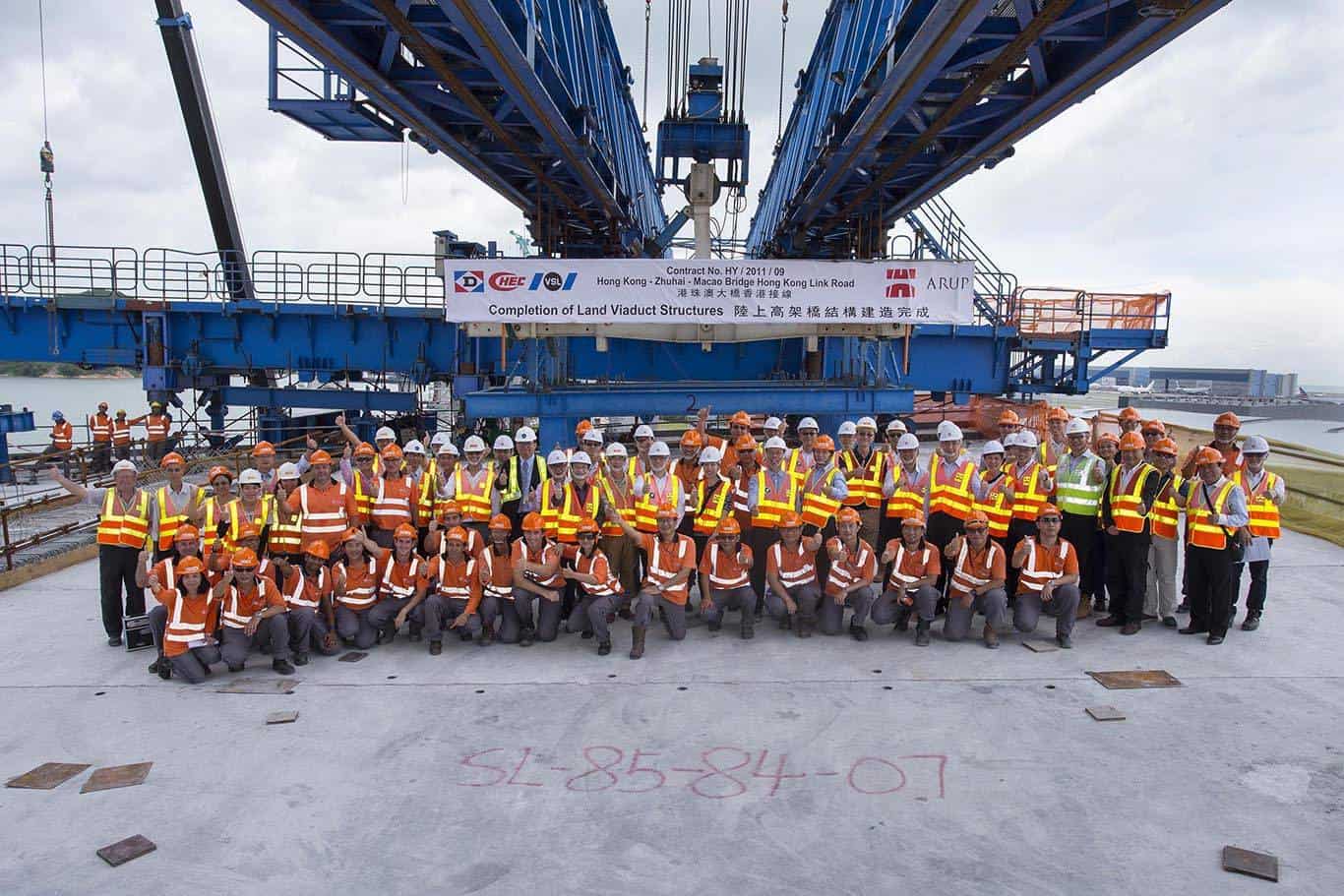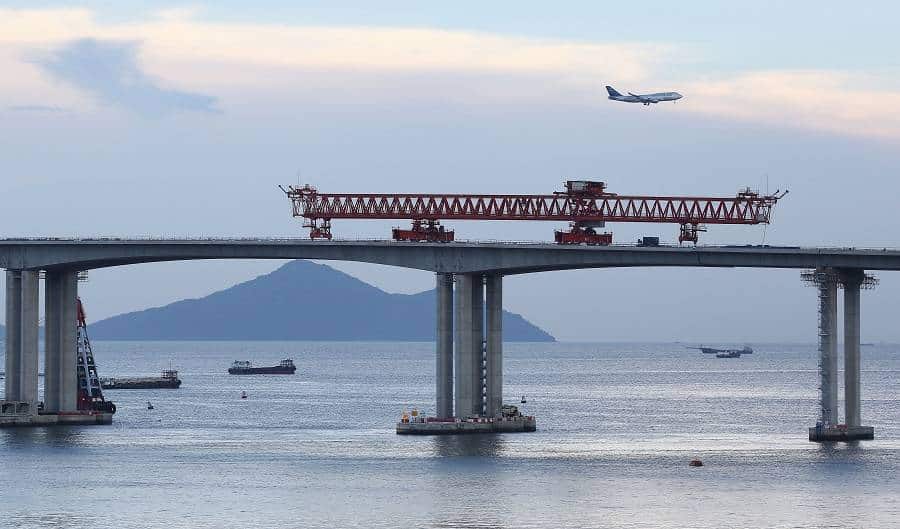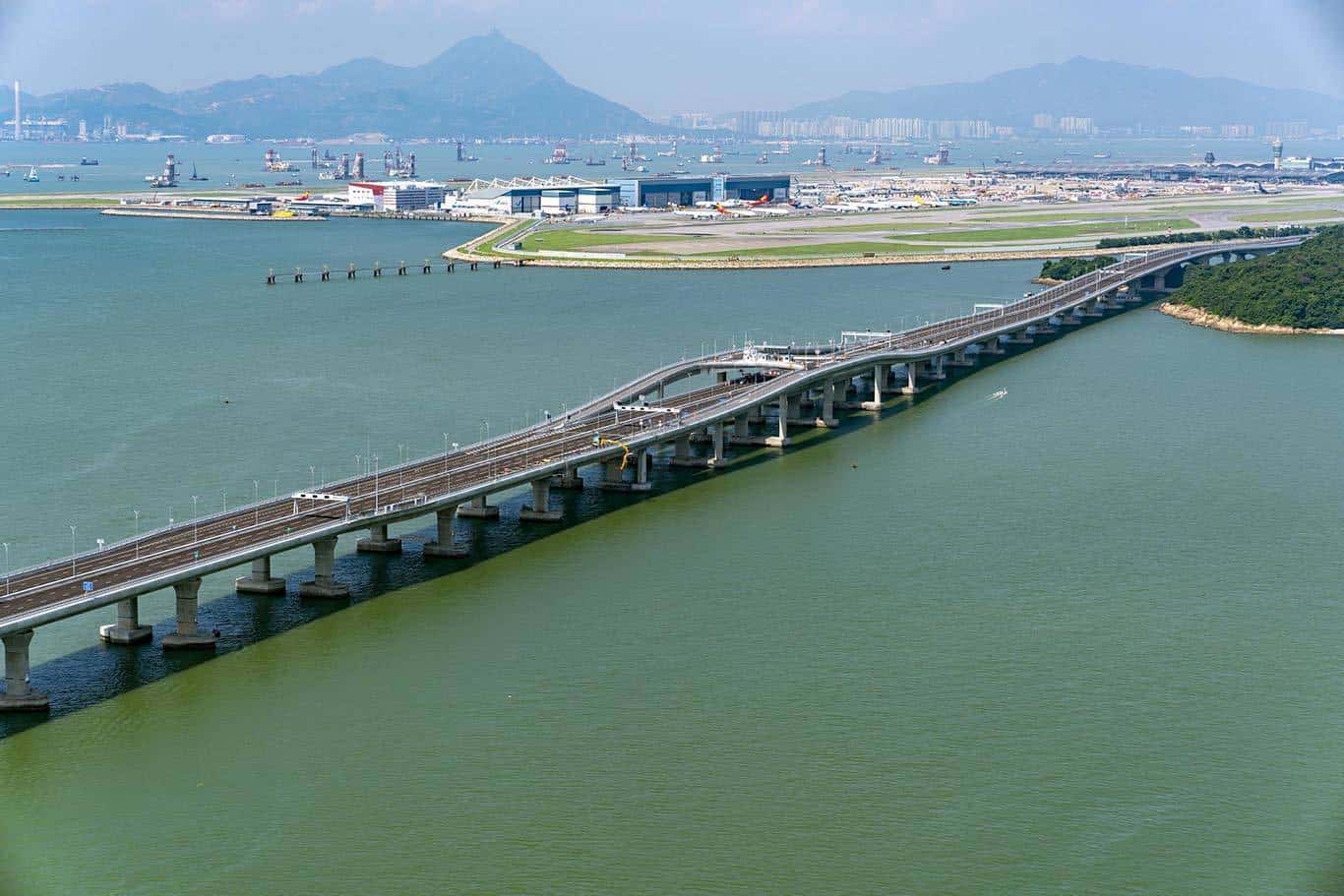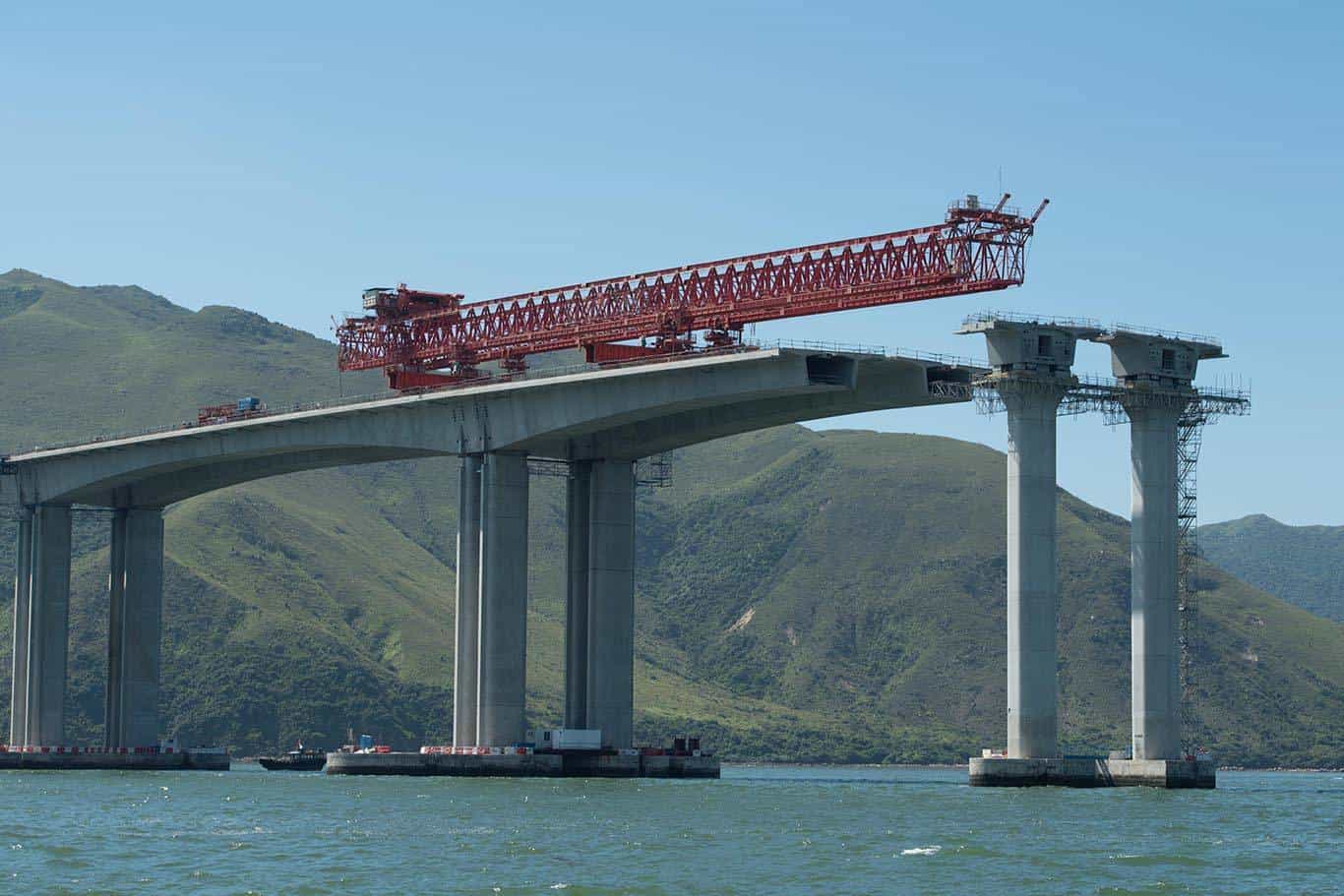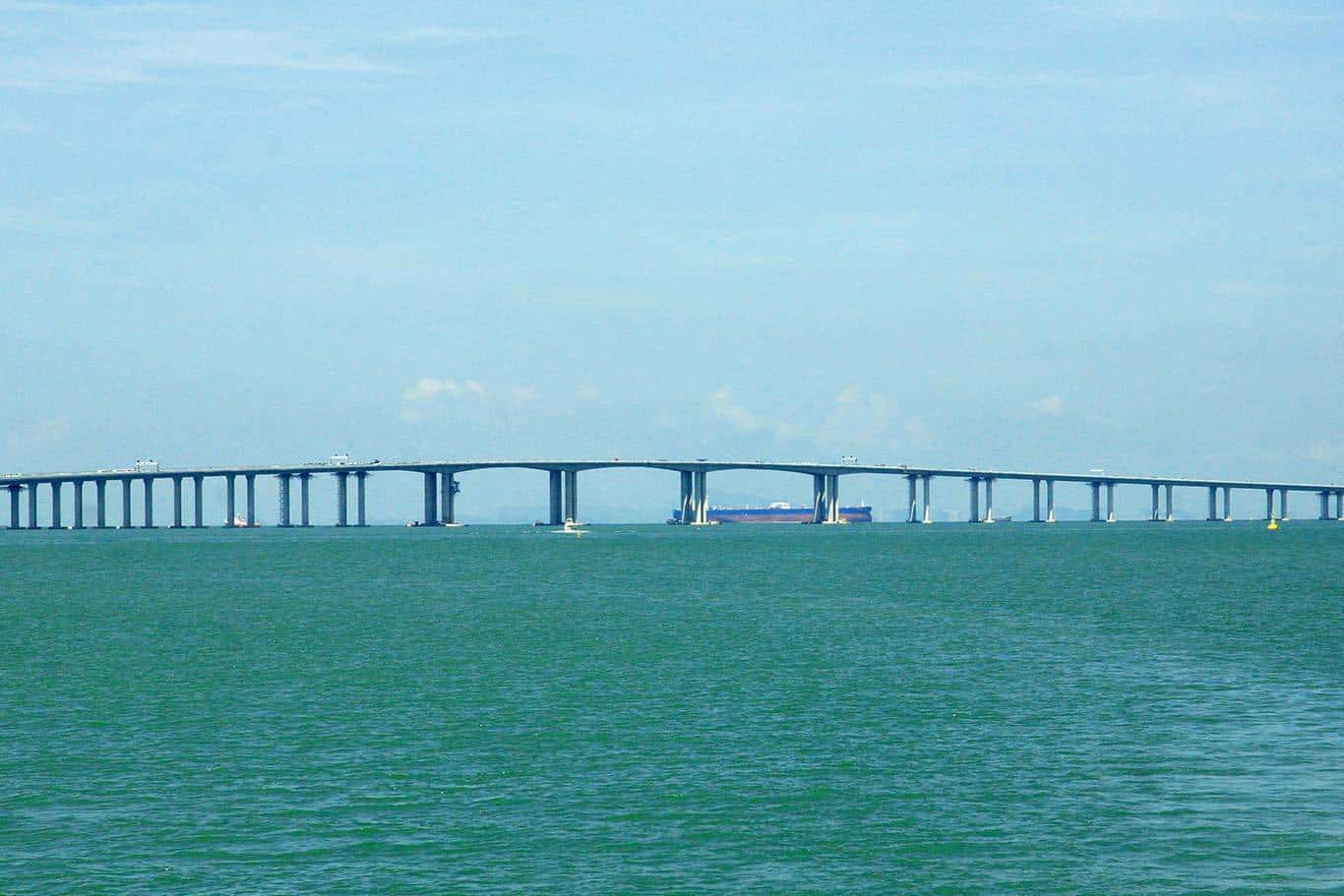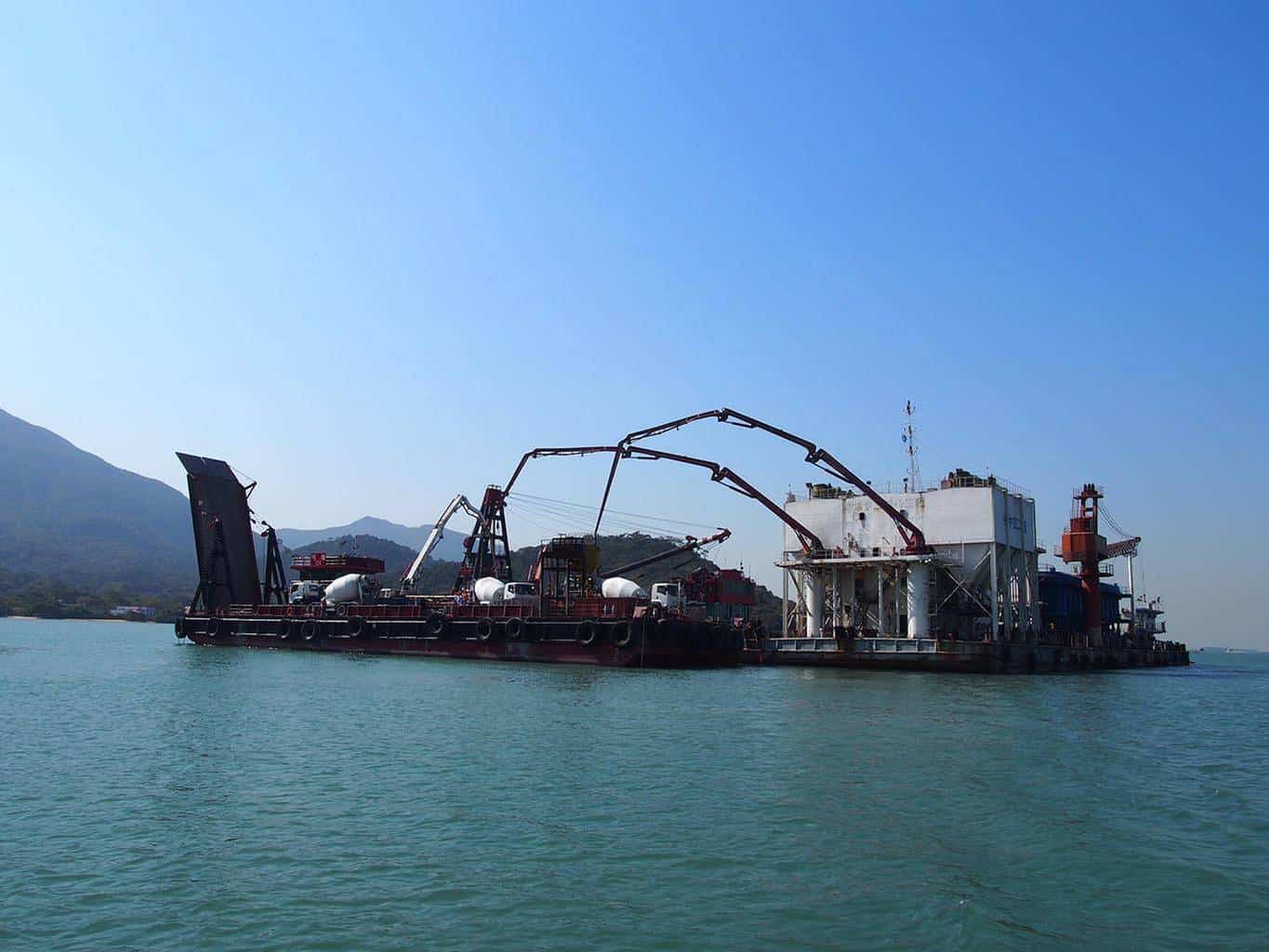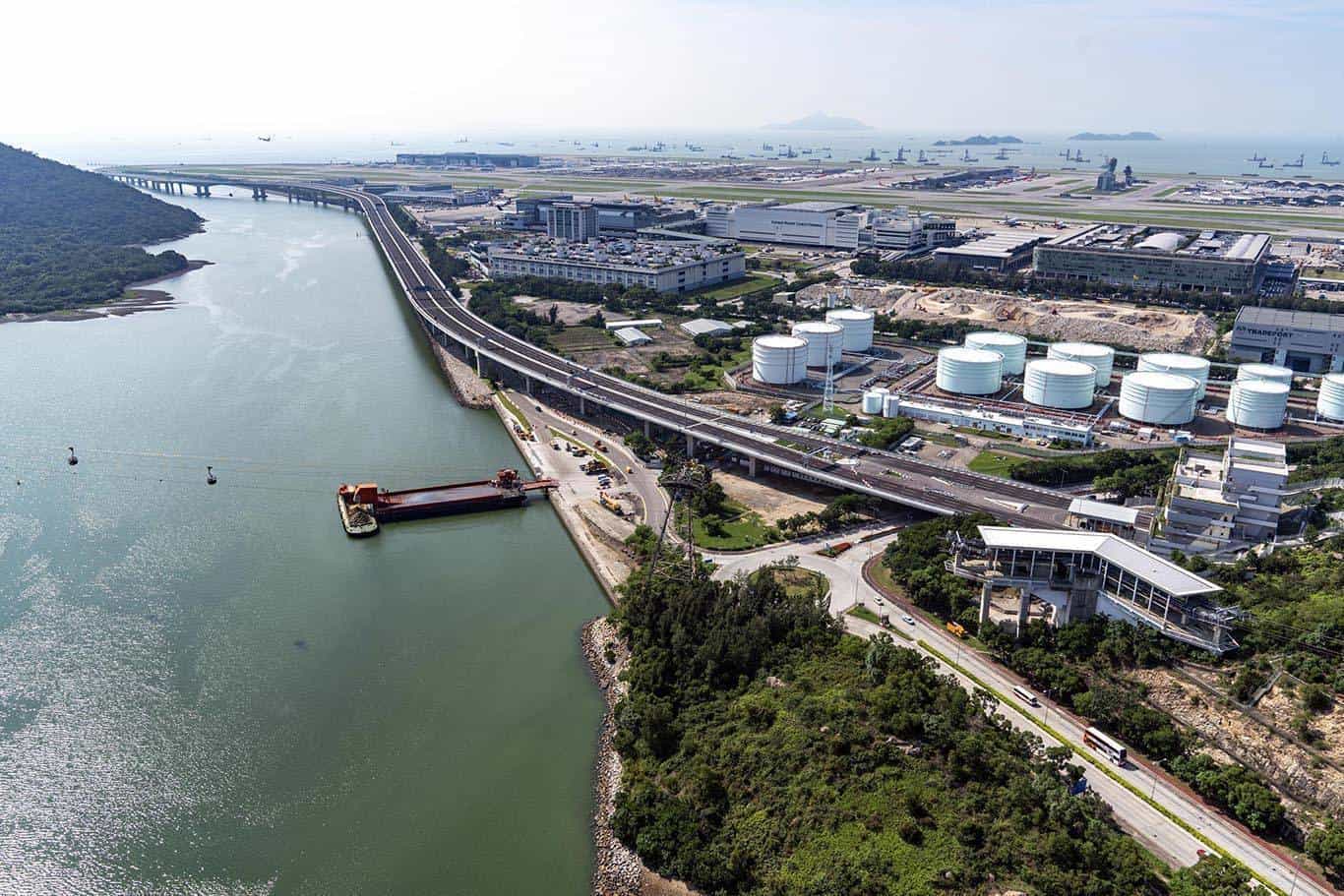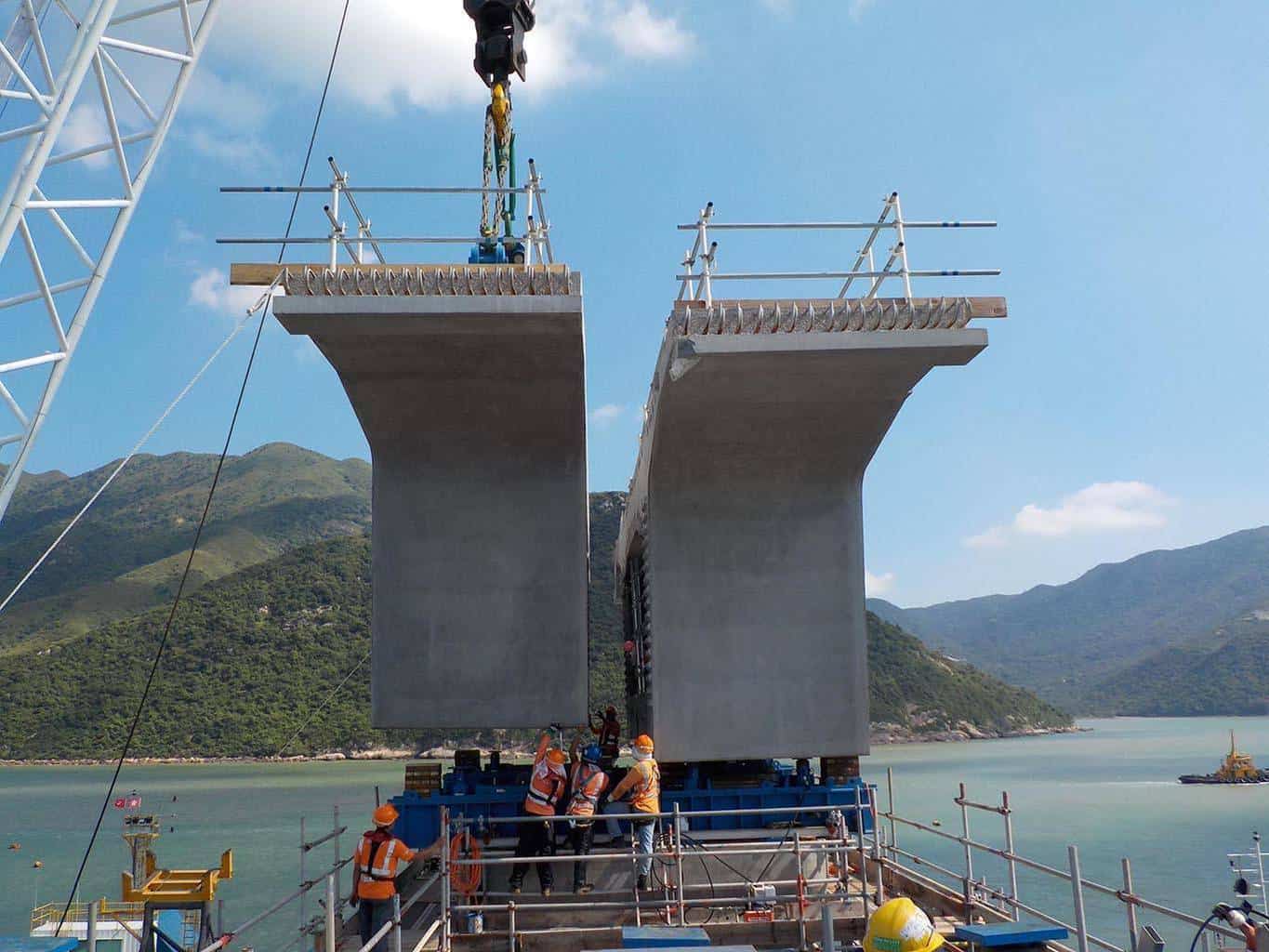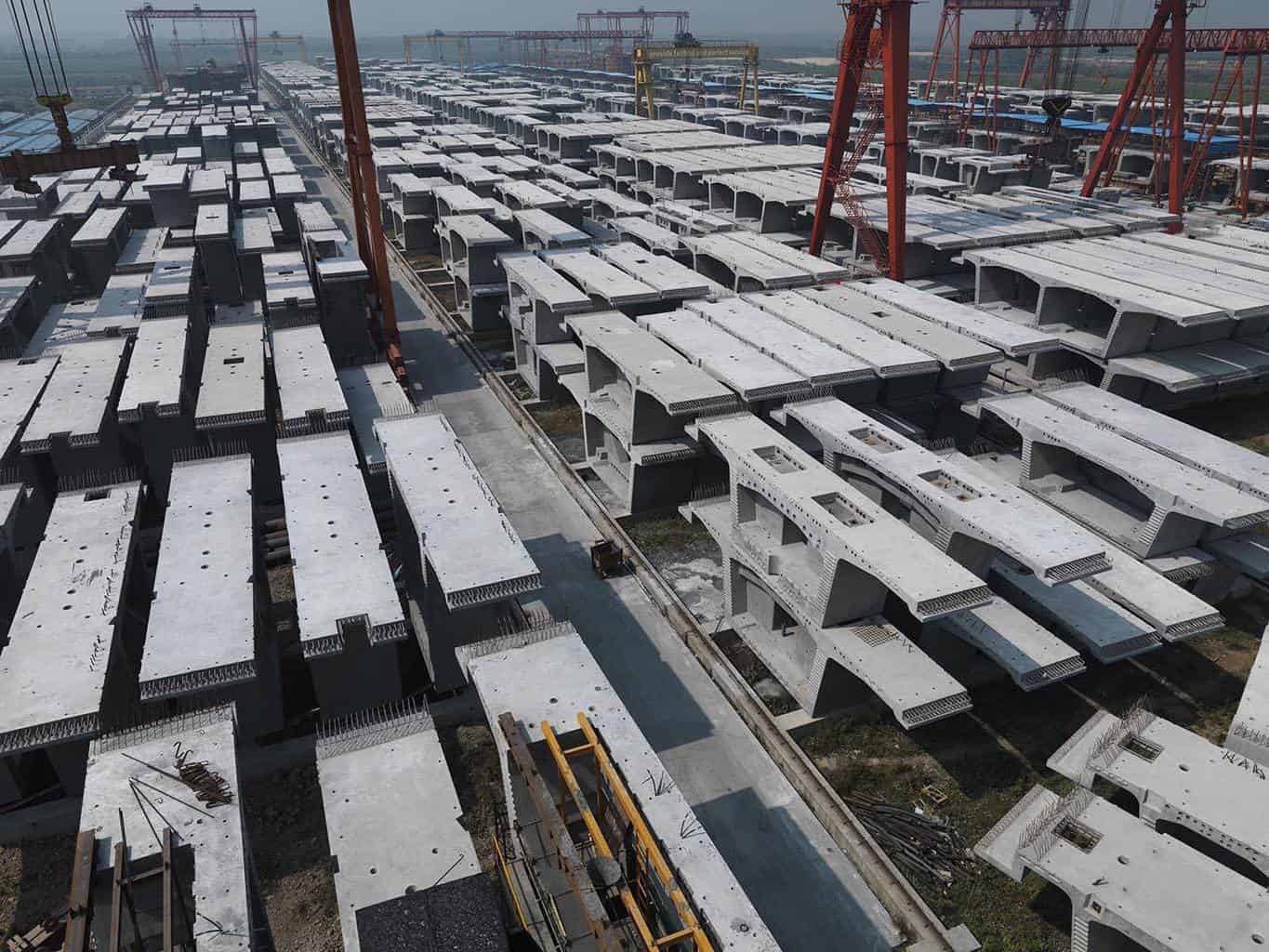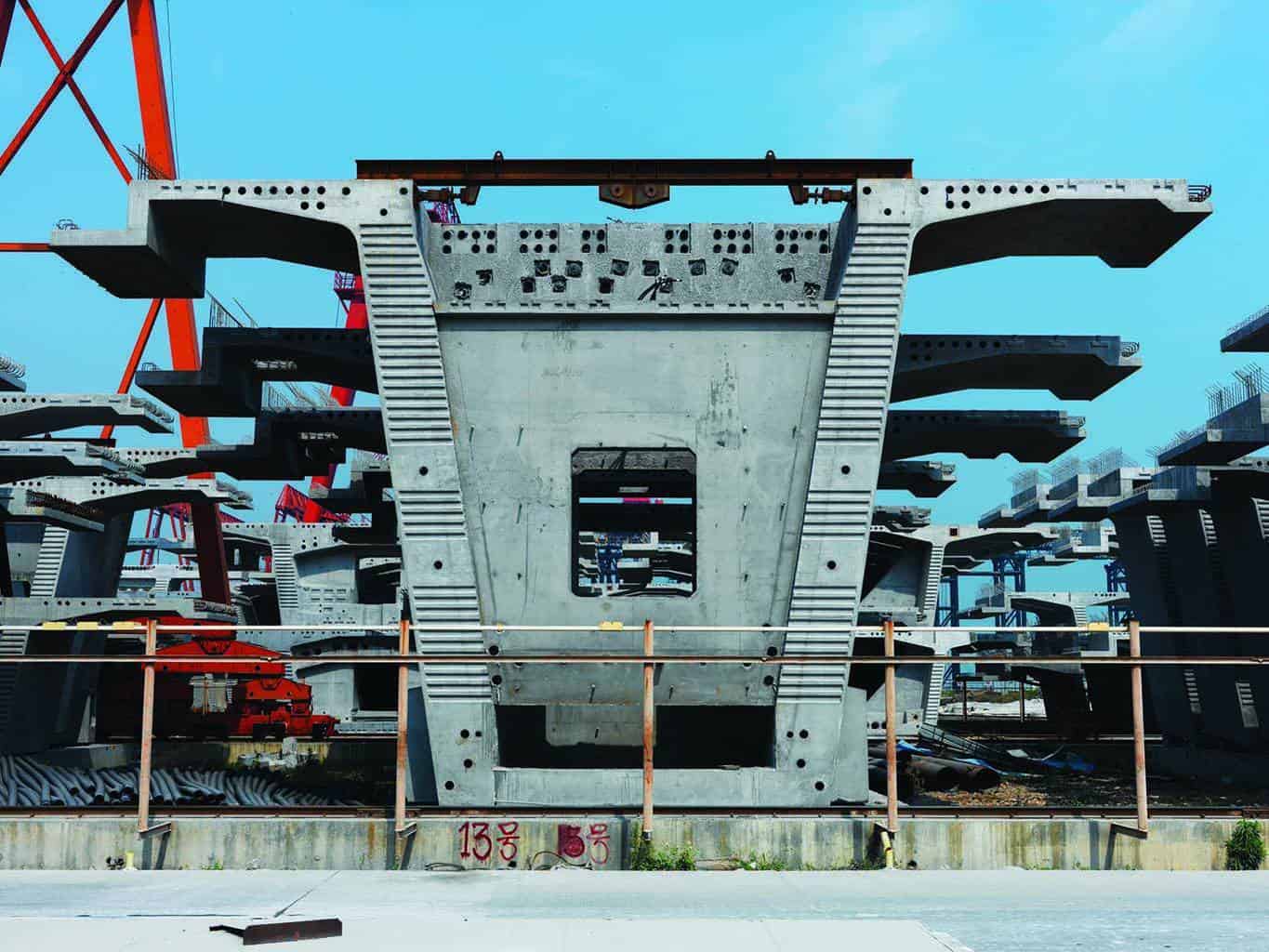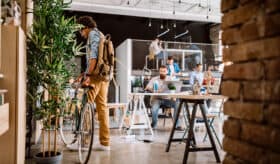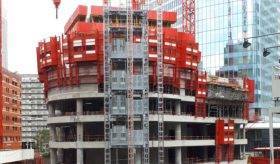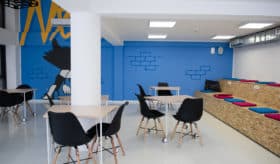Non classé
Tuesday October 23rd, 2018
Hong Kong-Zhuhai-Macau: a bridge over the Pacific
It's the world's longest sea-crossing bridge: 55 kilometres of motorway spans the Pearl River Estuary in the South China Sea before dipping into an undersea tunnel. The Chinese President Xi Jinping has today officially opened the gigantic infrastructure linking Hong Kong, Macau and mainland China. A colossal engineering structure, involving the Bouygues Construction subsidiaries Bouygues Travaux Publics, Dragages Hong Kong and VSL for the construction of a 9.4-kilometre section.
A bridge of strategic importance 5714 prefabricated segments of 250 different types, laid down at the rate of 18 per day, shaft grouted friction piling method to cope with difficult ground conditions – a technical first in Hong Kong –, sea-based installations and specific logistical arrangements to maintain the waterways throughout the duration of the works... Some notable innovations for the construction of this extraordinary bridge structure. It is now possible to reach Hong Kong from the main cities of the Pearl River delta in 30 minutes, compared with four hours by land and one hour by boat. A real basis for stimulating commercial ties between the two sides of the crossing.
Question? opinion? suggestion?
It‘s here!You will also like...
Top of the month
-
-
The Common Tower : A Technical First in France to Meet the Challenges of the Tour Alto !
Bouygues Bâtiment Ile-de-France, Parisian subsidiary of Bouygues Construction, is the first construction company in France to set up a common tower, which is on the Tour Alto construction site in La Défense.
-
Transport and industry: what if green hydrogen was the key to decarbonisation?
In order to accelerate the reduction of their own carbon footprint and support their customers with energy transition, Bouygues Construction and Bouygues Energies & Services signed an agreement on 15 October to invest in PowiDian, a start-up specialising in the self-sufficient production of hydrogen-based energy. This is the best way to reach zero carbon.
-
Intensifying the use of existing buildings
How do we do more with less? Modern cities are faced with numerous challenges. They need to emit less carbon and halt urban spread into natural areas, while also having enough space to live in social harmony and in line with shifting trends (reconstituted families, telework, etc.). With these contradictory demands—acquiring more space with less sprawl—time becomes an unexpected resource. Some spaces in our buildings are used only for certain times of the day, week or year. For example, educational facilities are generally used around 20% of the time, while offices are used between 30% and 45% of the time. This means they can be used more, by finding new users and new ways to use them. Let’s look at a few concrete examples.
-
LeanCo, the open innovation solution for democratising lean management
The Matching Up Challenge is back! This call for innovative projects ‘matches’ start-ups with Group employees. What's it like working with a start-up? Yolaine Perrot, Lean Management Director at Bouygues Construction and Xavier Motsch, the founder of LeanCo, tell us all about it.
-
What role can bicycles play in the cities of the future?
The COVID-19 pandemic, through the urban planning initiative of "coronavirus bike lanes", has highlighted the return of the bicycle to the city. In reality, this comeback has been under way for many years, though it did get a recent boost. What are the causes? What are the consequences on urban planning today? What will bicycles in cities look like ?
-
Cities and mobilities #1 An encounter with Virginie Alonzi
Urban projects, infrastructures, recharging stations for electric vehicles, Smart City ... The world of mobilities is changing every day and various different factors of it influence our daily lives. Introducing our series of expert testimonials on the subject. The first contribution is from Virginie Alonzi, Outlook Director at Bouygues Construction. She discusses the innovative solutions that are arising in the wake of emerging uses?
-
What are the expectations of the French public in terms of quality of life and ecological transition?
As the 3rd survey* carried out by the Observatory of Uses and Representations of Territories confirms, living in the city increasingly appears to be an oxymoron, and the desire to migrate is intensifying among the hyper-urban population. This is a powerful trend, and the pandemic seems to have accentuated the discontent, intensified the search for a new work/life balance, and even in certain cases to have created conditions that are more conducive to turning these desires into reality.
-

